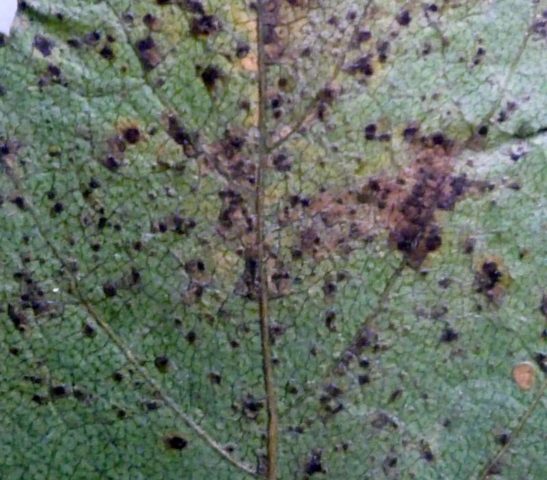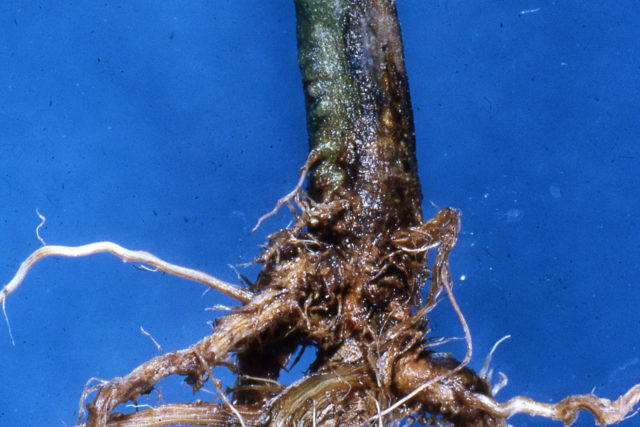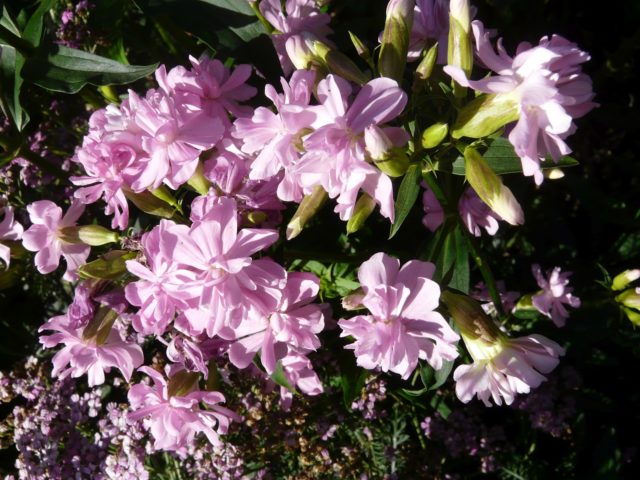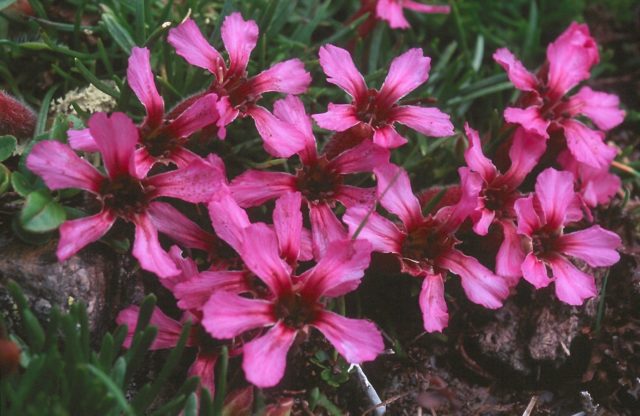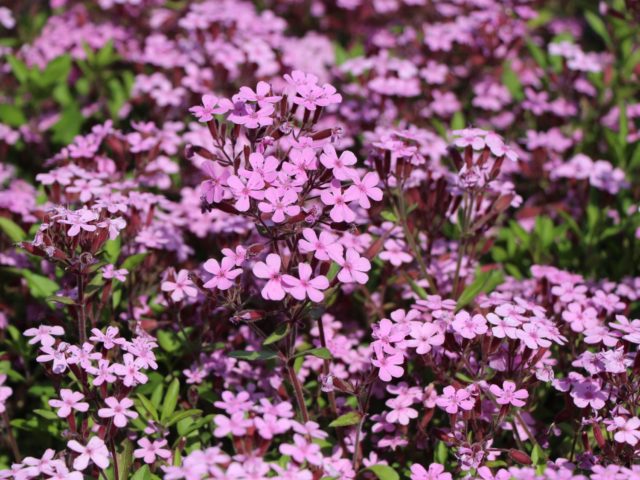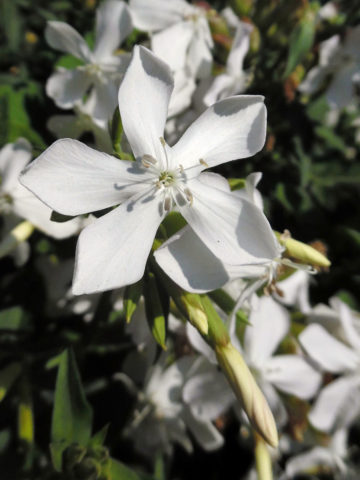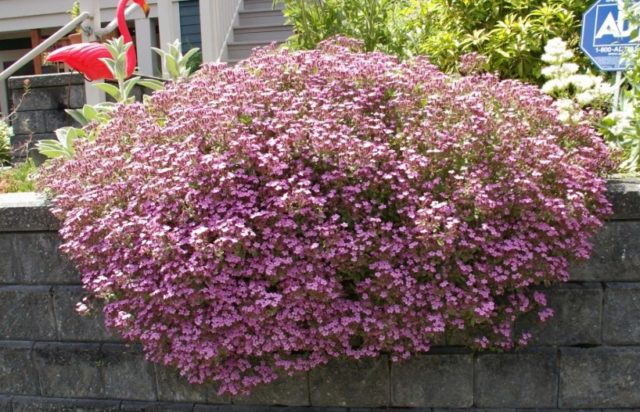Content
Basiliaceae, or saponaria (Saponaria), is an ornamental culture of the Clove family. Under natural conditions, more than 30 different varieties of soapwort are found everywhere: from the southern regions of Eurasia and the Mediterranean to the West Siberian regions. The Latin name comes from the word "sapo", which literally means "soap". The root system of saponaria consists of 35% saponin, which is capable of forming a thick foam.
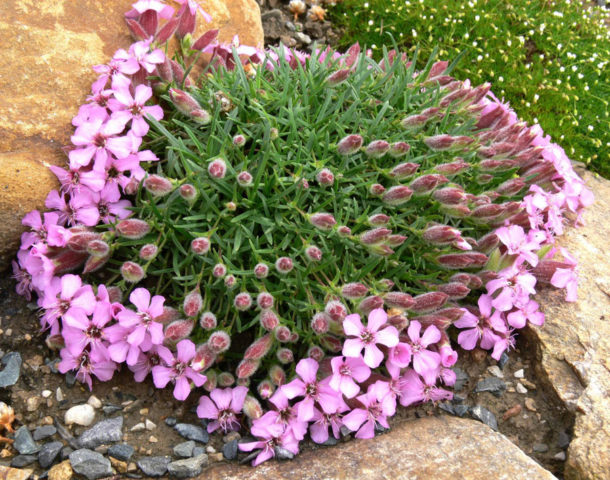
The plant is popularly called "soap root"
Description and characteristics
Basil-leaved soapwort is an unpretentious plant that can grow without much care. The culture is distinguished by the following parameters:
- bush height up to 90 cm;
- the root system is highly branched, with a tap-shaped central root;
- erect stems;
- the color of the stems is green, with a reddish tint;
- leaves are lanceolate, pointed at the apex, entire, without stipules, without petioles;
- the arrangement of the leaves is opposite;
- the color of the leaves is saturated green;
- inflorescences paniculate-corymbose with large flowers;
- the number of petals in the corolla is five, with elongated marigolds;
- flower size up to 3 cm;
- the color of the petals is white, pink, purple, red;
- fruits - poly-seeded capsules, elongated;
- seeds are small-tubular, black.
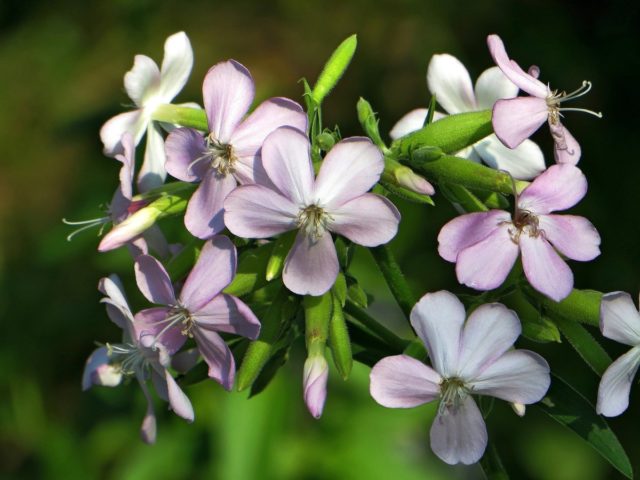
The blooming period of the soapwort is characterized by the beginning of summer and ends with the onset of autumn.
Reproduction methods
In the photo below, there is a basil-leaved soapstone that reproduces in two main ways:
- seed (sowing in open ground or seedlings);
- vegetative (grafting or dividing the bush).
Seed propagation is used in spring or mid-autumn. Cuttings are used in the spring, before flowering. Dividing the bush is done at any time during the growing season.
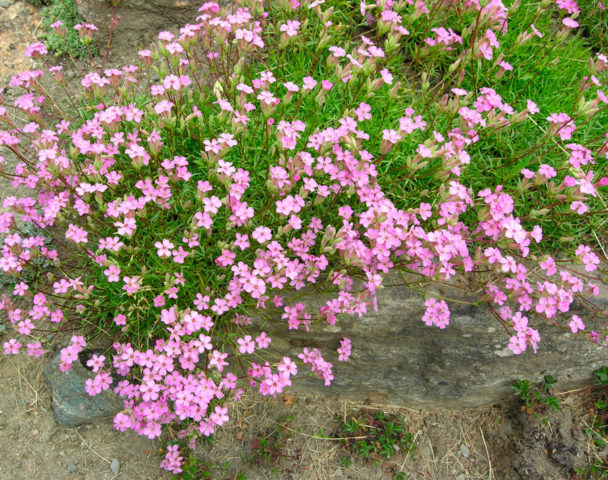
Dividing the soapwort bush ensures effective rejuvenation of the mother culture
Growing soapwort basilifolia from seeds
The seed method of reproduction of the basil-leaved soapwort involves sowing seeds in open ground or growing seedlings.
The first option is carried out in mid-autumn or early spring.
In the case of sowing in October in winter, the seeds undergo natural stratification. In spring, they germinate after the final warming up of the soil.
Purchased seeds that have undergone pre-planting treatment can be sown in open ground in spring at an ambient temperature above + 20 ⁰С. After the appearance of the first shoots, the seedlings are thinned out, leaving the strongest and strongest specimens at a distance of up to 30 cm from each other.
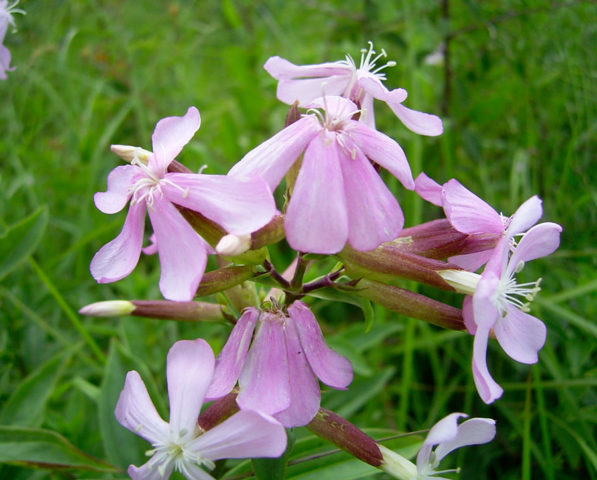
Seedlings of soapwort are planted in planting boxes in the first decade of March
Algorithm for sowing seedlings of basil-leaved soapwort:
- the container for seedlings is treated with disinfectant solutions;
- loose soil mixture is disinfected;
- seeds are mixed with river sand;
- the soil is moistened with warm water from a spray bottle;
- seeds mixed with sand are distributed over the surface of the earth without deepening, sprinkled with sand;
- the container is covered with foil or glass.
Containers with crops are placed in a warm, bright place and germinated at temperatures above + 21 ⁰С. When the first shoots appear, the shelter is removed. The picking of soapwort seedlings is carried out after the appearance of two main leaves on the seedlings.
Saplings are grown in a well-lit and warm place to prevent thinning and stretching of the stems.

Young Saplings are hardened outdoors 2 weeks before transplanting into open ground
Dividing the bush
Saponaria are engaged in dividing the bush in the spring and summer. An adult plant of the basilicum, intended for rejuvenation, is divided into parts. The bush is carefully dug up and removed from the ground. The earth is shaken off, with a knife it is divided into several parts (2-3 plots). Sections are treated with wood ash. Each plot must have developed roots and a growing point.
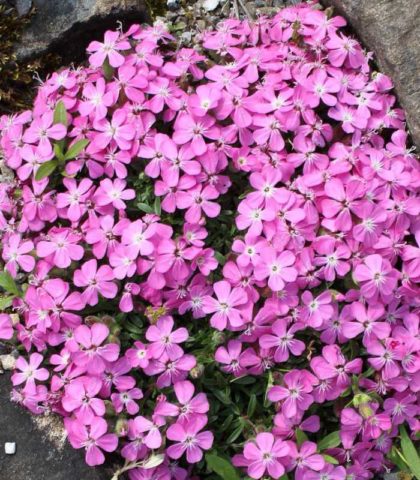
Prepared plots of decorative basil-leaved soapwort are planted in prepared holes immediately to prevent drying out of the root system, at a distance of more than 30 cm from each other
Cuttings
Cuttings are cut in early spring from the top of young, healthy shoots. The procedure is carried out before the flowering of adult bushes. Cuttings are prepared in a special way: all the leaves are cut from the stems, one pair of leaves is left at the top of the shoot. This technique allows you to reduce the intense evaporation of moisture from the surface of the plant leaves. Cuttings are planted in containers with a mixture of sand and peat, well spilled and placed in a shaded place.
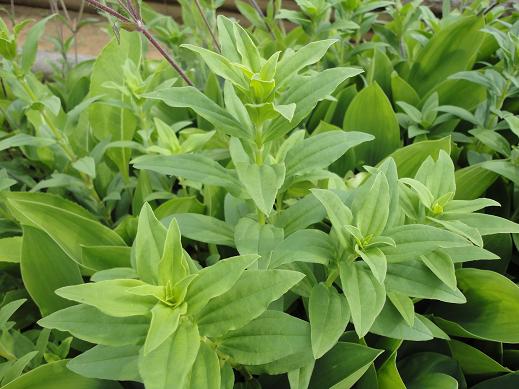
After the roots appear, the rooted cuttings of the soapwort are transplanted to a permanent place in the garden
Planting and caring for the basil-leaved soapwort
The decorative basil-leaved soapwort does not require complex agricultural techniques during planting and care. An unpretentious plant grows and develops equally well anywhere.
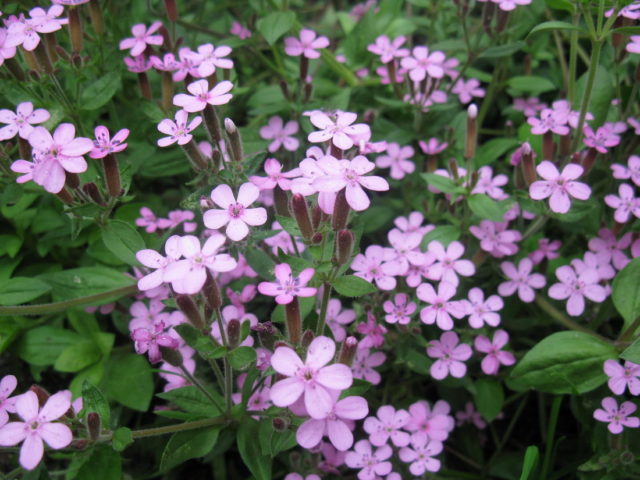
Decorative basil-leaved soapwort - easy to care for, attractive garden culture
Dates of sowing seeds for seedlings and in open ground
The optimal timing for sowing seeds can be called:
- in open ground - October (before winter) or April-May;
- for seedlings - early March.
In the open ground, the seedlings of decorative basil-leaved soapwort are moved at the end of May when a stable warm temperature is established.
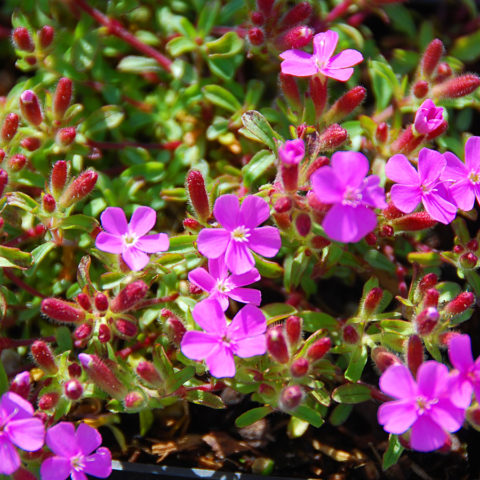
The most comfortable air and soil temperature for germination of soapwort seeds is more than + 20-22 ⁰С
Soil and seed preparation
Basil-leaved soapwort prefers dry, loose, neutral, poorly fertile soil with an admixture of lime. Any place is suitable for a plant:
- in full shade;
- in conditions of partial shading;
- in well-lit conditions.
Purchased soapwort seeds do not stratify. Seed material collected at home needs preliminary hardening for 2 months. To do this, they are placed either on the lower vegetable shelf of the refrigerator, or on the street (a container with seeds is placed in a snowdrift).
Before planting seeds in the ground, the soil is well spilled with water.

Since the planting material is small in size, the seeds of soapwort basilifolia are mixed with fine river sand
Sowing seeds for seedlings and in open ground
The algorithm for sowing seeds of soapwort basilicum is the same (for sowing on seedlings and sowing in open ground):
- before sowing, the land is well shed with water;
- prepared seeds, mixed with sand, are evenly distributed over the surface of the moistened soil;
- placed without deepening;
- after sowing, dust it a little with sand;
- cover with glass.
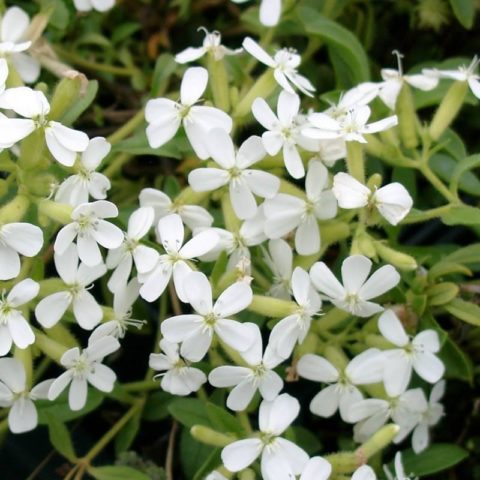
With the threat of night spring frosts, the crops of the basil-leaved soapwort in the open field are covered with plastic wrap
Planting seedlings and subsequent care
Seedlings of soapwort are planted in open ground in May when the threat of sudden changes in temperature has passed.
Before planting, in some cases, additional liming of the soil is carried out.
Algorithm for moving soapwort seedlings into open ground:
- in the prepared planting holes, the seedlings are moved along with a lump of earth;
- the bushes are pressed to the ground and sprinkled with earth;
- seedlings are carefully watered;
- the landing site is mulched with sandstone, gravel or crushed stone.
Basil-leaved soapwort is a rather unpretentious culture for which minimal care is suitable:
- rare watering up to 1 time per week;
- mulching with bulk materials to prevent the appearance of weeds;
- loosening the soil during watering and removing weeds;
- fertilization 2 times during the growing season with preparations containing calcium;
- cutting off faded inflorescences up to 5 cm above the soil level (if there is no need to collect seeds).
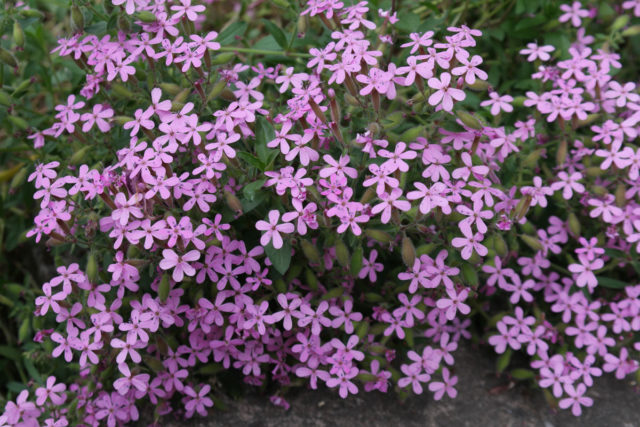
After the timely removal of faded inflorescences, the bushes of the basil-leaved soapwort will grow more harmoniously, the subsequent flowering wave will be an order of magnitude more spectacular than the previous one.
Pests and diseases
Basilicola soapwort, or ornamental saponaria, like most unpretentious plants, has an enviable immunity to pathogens of most diseases and pests.
Most often, the soapworm is attacked by the caterpillars of the scoop butterfly. Large colonies of myotis actively reproduce in June-July. The caterpillars of the scoop hatch in the middle of the summer season, infect the seed pods of the soapwort.
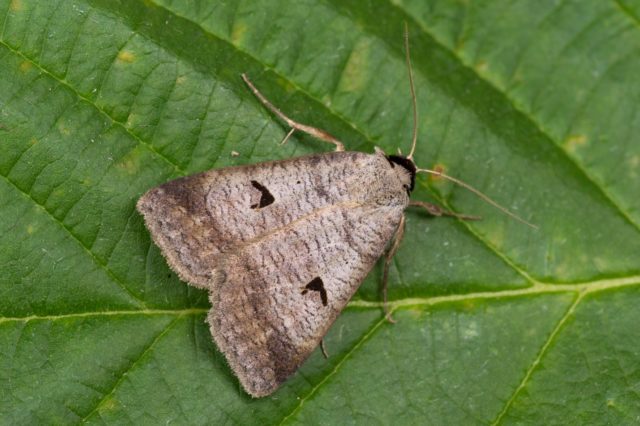
To combat caterpillars, scoops use modern insecticidal preparations Aktara, Fitoverm, Karbofos
Culture can be affected by the following ailments:
- Leaf spot. It can be determined if there are spots of brown, black, brown colors on the leaf plates. The cause of the manifestation of a fungal disease can be abundant watering or the establishment of consistently humid, cold weather.
In case of detection of the first signs of fungus on the foliage of the soapwort, fungicides are used (Bordeaux liquid, Fundazol), if the plants are completely affected, they should be removed and burned
- Root rot - a dangerous fungal disease that affects the root system. After decay of the roots, the ground part of the plants withers and completely dies. Root rot can be caused by poor care, excessive soil moisture, insufficient disinfection of the soil and planting material in the process of growing seedlings.
Copper sulfate, Bordeaux mixture, Maxim, Discor preparations are used to treat affected specimens of soapwort.
Application in landscape design
In landscape design, saponaria is used to decorate the local area of various stylistic directions. The decorative basil-leaved culture looks original:
- on prefabricated flower beds;
- on the alpine slides;
- for decorating crevices, rocks or boulders;
- in group landings;
- in discounts;
- on curbs;
- in decorative pots and hanging flowerpots.
Ornamental varieties of saponaria can be combined with garden crops such as Iberis, Edelweiss, Yaskolka, Saxifrage, Sunflower, Sage, Bells, Garden Chamomile.
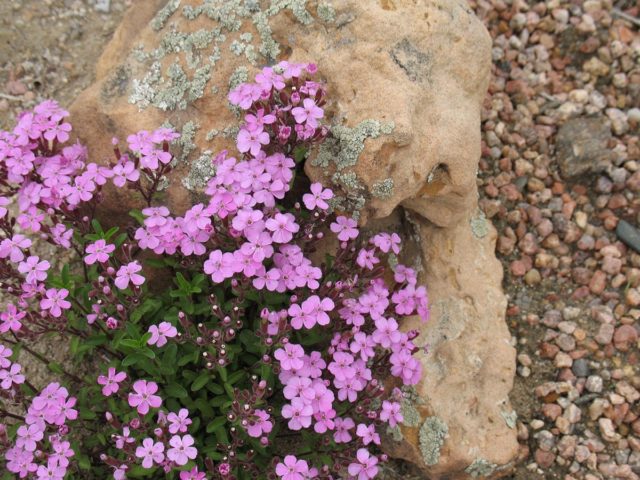
An ornamental plant looks exquisitely as the main decor of exotic boulders
Modern landscape designers prefer the following varieties of saponaria:
- Low-growing, noble variety Rosea Plena (Rosea Plena) differs in stem height up to 50 cm, pale pink double-type flowers.
Abundant flowering of soapwort Rosea Plena lasts from July to September, the diameter of individual buds in paniculate inflorescences reaches 3.5 cm
- Spectacular Pumila delights with the extraordinary shape of the petals of individual buds in the inflorescence and magnificent tints of colors: from purple to burgundy and pale pink.
Low-growing soapwort Pumila is ideal for single plantings, decor of natural stones, boulders
- Basil-leaved variety Luxury - a popular, unpretentious flower, which is characterized by abundant flowering of small flowers of a pinkish-lilac shade, located directly on the shoots.
Attractive ground cover soapbox Luxury looks elegant in group, themed mixborders
- Snow top - an exquisite variety with snow-white inflorescences, the correct shape of five-petal flowers.
Neatly outlined lines of pure white soapworm petals Snowy top looks impeccable on flower beds, borders, rockeries
- Moon dust - a beautiful basil-leaved variety, distinguished by pinkish-salmon inflorescences.
Moon dust is the current choice for horizontal and vertical landscaping of the territory
Conclusion
Basilicum soap, or "soap root", is a beautiful garden plant, which is valued not only for the attractive appearance of flowering inflorescences. Due to the presence of saponins, the culture is considered medicinal and serves as a raw material for obtaining medicinal compounds for diseases of the respiratory tract, liver, spleen, skin diseases, treatment of eczema, metabolic disorders. In ancient times, soap was made from the root of the soap, which was used for washing clothes and washing pets. In addition, saponaria is a raw material for the production of confectionery products (halva, Turkish delight).
